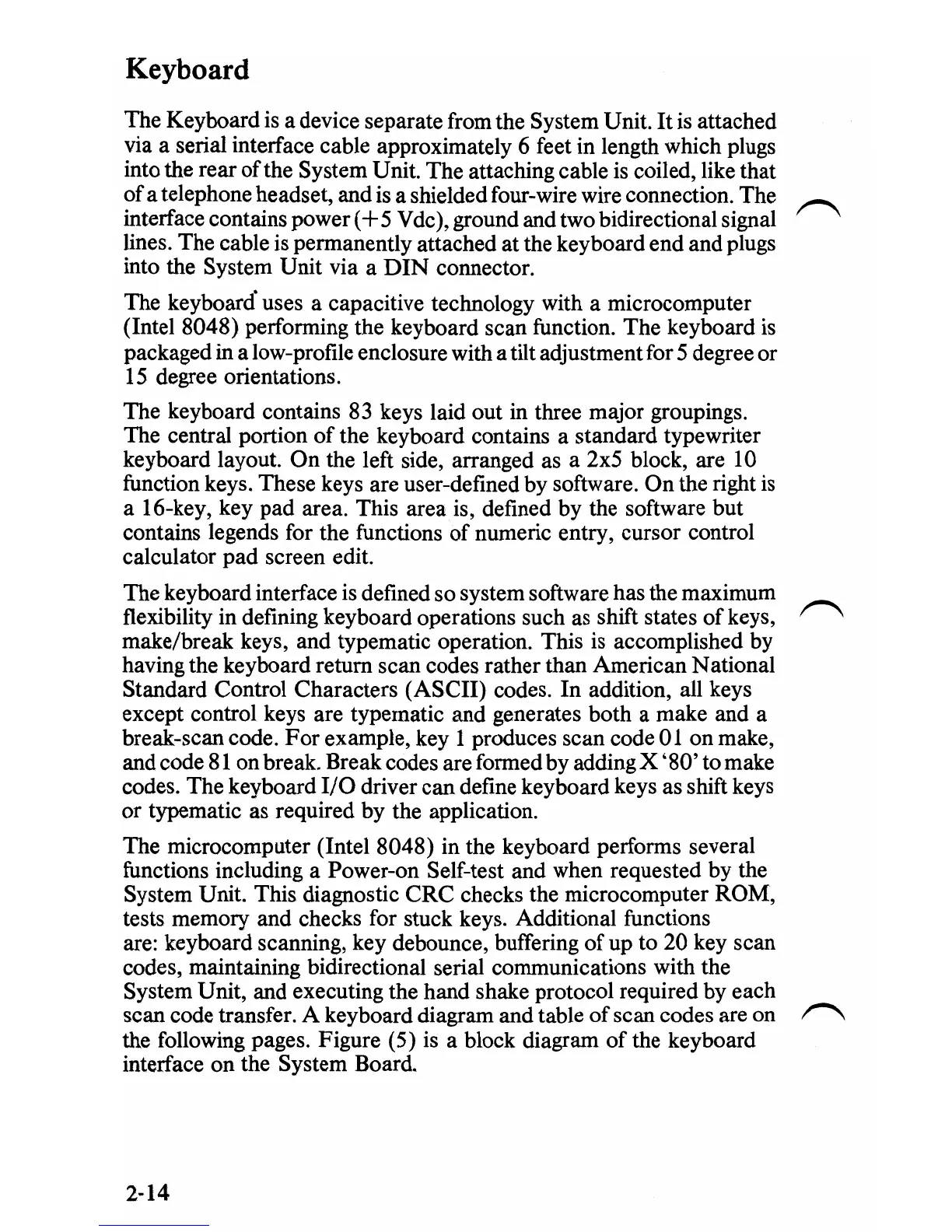Keyboard
The Keyboard is a device separate from the System Unit.
It
is attached
via a serial interface cable approximately 6 feet in length which plugs
into the rear
of
the System Unit. The attaching cable
is
coiled, like that
of a telephone headset, and is a shielded four-wire wire connection. The
interface contains power (
+5 Vdc), ground and two bidirectional signal
lines. The cable is permanently attached at the keyboard end and plugs
into the System Unit via a
DIN
connector.
The keyboard' uses a capacitive technology with a microcomputer
(Intel 8048) performing the keyboard scan function. The keyboard is
packaged in a low-profile enclosure with a tilt adjustment for 5 degree or
15
degree orientations.
The keyboard contains 83 keys laid out
in
three major groupings.
The central portion
of
the keyboard contains a standard typewriter
keyboard layout.
On
the left side, arranged as a 2x5 block, are 10
function keys. These keys are user-defined by software.
On
the right
is
a l6-key, key pad area. This
areais,
defined by the software but
contains legends for the functions
of
numeric entry, cursor control
calculator pad screen edit.
The keyboard interface
is
defined so system software has the maximum
flexibility in defining keyboard operations such
as
shift states
of
keys,
make/break keys, and typematic operation. This is accomplished by
having the keyboard return scan codes rather than American National
Standard Control Characters (ASCII) codes.
In
addition, all keys
except control keys are typematic and generates both a make and a
break-scan code.
For
example, key 1 produces scan code 01 on make,
and code
81
on
break. Break codes are formed by adding
X'
80'
to make
codes. The keyboard
I/O
driver can define keyboard keys as shift keys
or typematic as required by the application.
The microcomputer (Intel 8048) in the keyboard performs several
functions including a Power-on Self-test and when requested by the
System
Unit
This diagnostic
CRC
checks the microcomputer ROM,
tests memory and checks for stuck keys. Additional functions
are: keyboard scanning, key debounce, buffering
of
up to
20
key scan
codes, maintaining bidirectional serial communications with the
System Unit, and executing the hand shake protocol required by each
scan code transfer. A keyboard diagram and table
of
scan codes are on
the following pages. Figure (5) is a block diagram
of
the keyboard
interface on the System Board.
2-14
